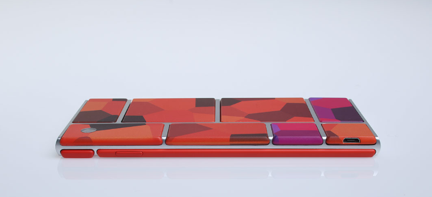Google’s Project Ara Developers Conference kicked off today detailing its plan for its modular smartphone project, Project Ara.
Project Ara is Google’s Advanced Technology and Projects (ATAP) division’s smartphone project that would allow users to change physical components as easily as downloading a new app. The idea is to take a basic exoskeleton and have standard-sized modules connected to it in order to produce a personalized smartphone. Components attach to the frame through electro-permanent magnets and will use the UniPro standard in order to communicate between modules.

“We want to make the smartphone hardware ecosystem more like the software ecosystem,” said Paul Eremenko, head of Project Ara.
(Related: Google release first Project Ara Module Developers Kit)
The phone is aimed at people who still use feature phones (phones that have limited or no Web apps, and a limited ability to run third-party apps). The goal is to be inexpensive, easy to use, highly configurable, and customizable.
“Let’s imagine a phone for the next 5 billion people,” Eremenko added.
He announced that Google plans to have the first Project Ara phone go on sale in January 2015. The entry-level device has been dubbed the “gray phone” and will cost US$50, which covers the projected bill of material cost, he added.
“It’s called the gray phone because it’s meant to be drab gray to get people to customize it,” Eremenko said.
In order to provide a custom phone for users, Project Ara is relying on 3D printing. Currently, the Ara team is working with 3D Systems in order to be able to produce large-scale custom shells.
The phones will support Android, but in order for that to happen Google has some work to do. The Android operating system does not currently support the necessary driver in order to control modular components.
“It’s true that Android does not support dynamic hardware today,” said Eremenko. “The good news is that we’re Google.”
The team plans to have Android drivers ready in December just before the public release of the “gray phone.”
The conference also provided developers with a guided tour of the recently released Project Ara module developers kit (MDK). The MDK shows developers how to create modules that complement the Ara platform. It includes examples of compiling with specifications, prototype module designs, and module templates.
The next MDK, 0.15, is expected in May, which will be designed to clean up version 0.10 and incorporate developer feedback. MDK 0.20 is expected in September, MDK 0.50 is expected in December and MDK 1.0 is expected when the phone is released.
Another Project Ara developer conference will be held in July, and a third will take place in September.






